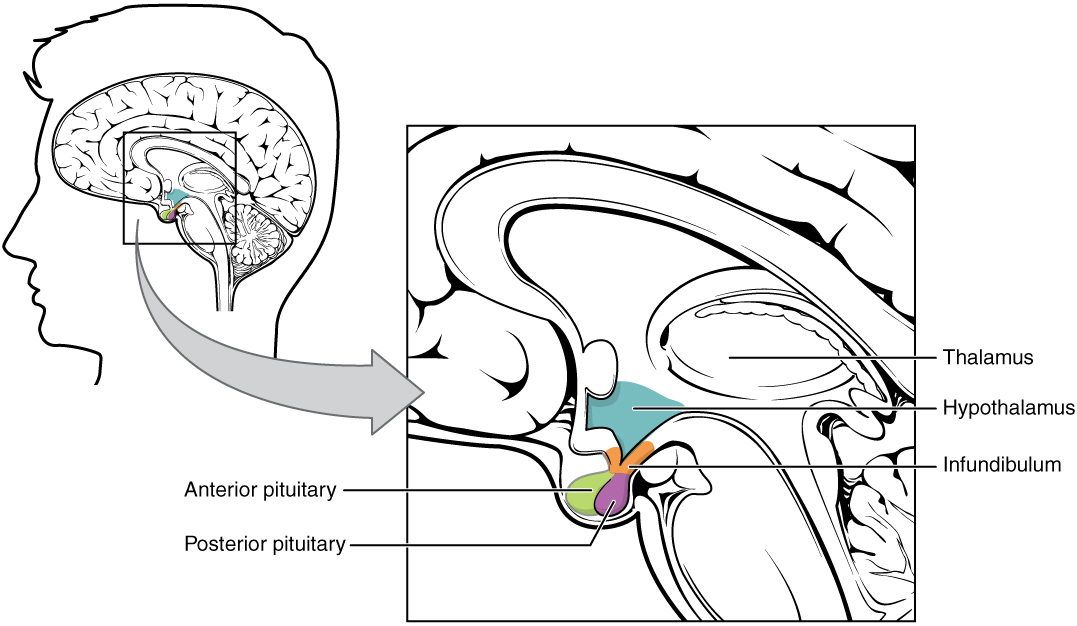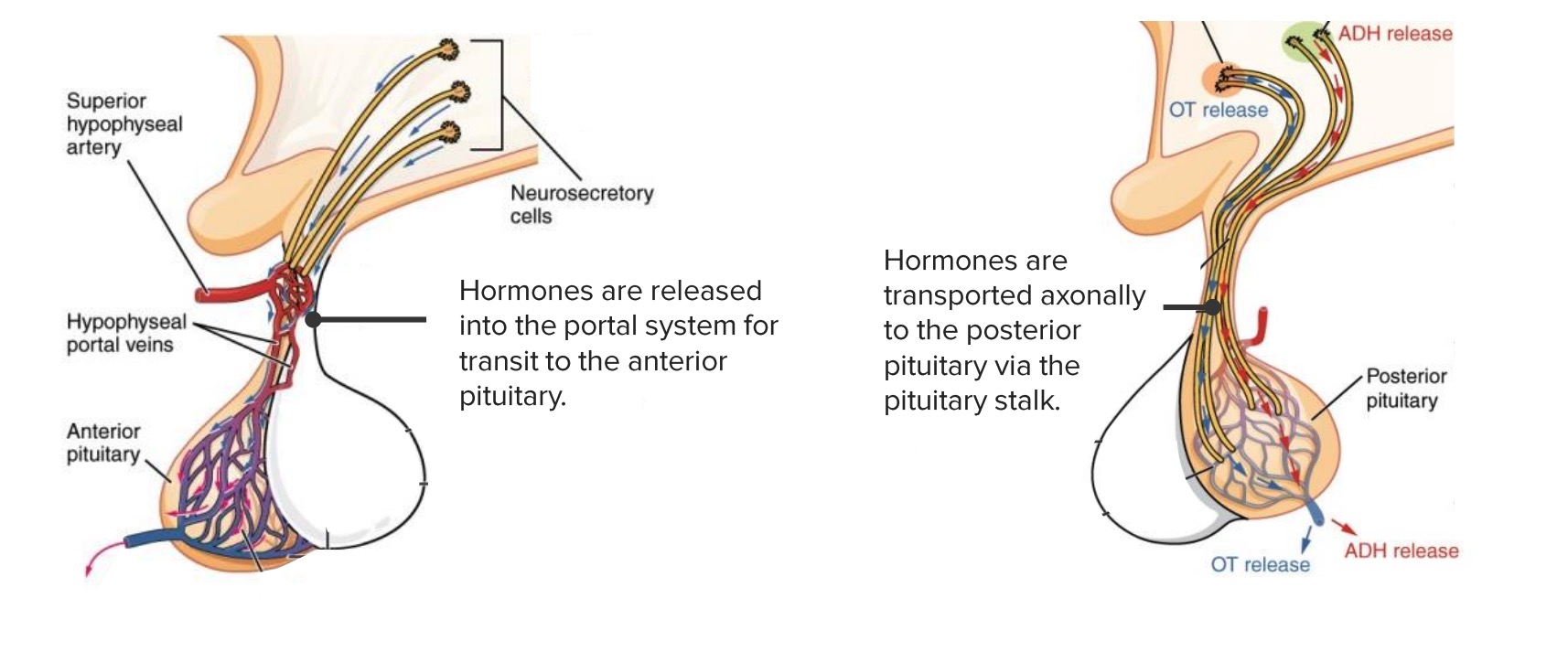Playlist
Show Playlist
Hide Playlist
Hypothalamic–Pituitary–Thyroid Axis
-
Slides Thyroid Endocrine System.pdf
-
Download Lecture Overview
00:00 Thyroid hormones. 00:02 Tyroxine or T4. 00:05 And triiodothyronine which is T3. 00:10 When we want to think about the hypothalamic pituitary thyroid axis we need to start in hypothalamus. 00:20 In the hypothalamus we have two structures that we need to take into account. 00:24 The paraventicular nucleus here and arcuate nucleus which is seen below. 00:34 These are the places in which we are going to be able to secrete the substances the thyrotrope. 00:42 So paraventicular nucleus secretes somatostatin and arcuate nucleus secretes thyroid releasing hormone. 00:50 These are going to then be placed within the circulation of the anterior pituitary. 00:56 And then the thyrotropes are what are going to respond to either somatostatin or TRH. 01:01 So if we start off with the hypothalamus, we have TRH. 01:07 That is going to be released to stimulate pituitary thyrotropes. 01:13 But remember you have somatostatin which acts as an inhibitor to those very same thyrotropes. 01:19 So if there is enough TRH around and you're able to allow those thyrotropes to release their hormone, which is thyroid stimulating hormone, that will then engage the thyroid gland. 01:33 The thyroid gland will then produce T3 and T4. 01:37 There is negative feedback with T3 and T4. 01:40 The first portion of the negative feedback, is that it inhibits both the anterior pituitary thyrotropes to release thyroid stimulating hormone. 01:52 And it also inhibits the stimulatory nuclei. 01:56 And what this means is that even though thyroid releasing hormone normally is released to stimulate thyrotropes, you can inhibit that nuclei so it doesn't release thyroid releasing hormone. 02:12 Now in terms of the feedback control, you also have one more arm and that arm positively stimulates the hypothalamic nuclei that inhibits the anterior pituitary thyrotropes. 02:25 So what you do is you stimulate the inhibitor or somatostatin to be released. 02:33 This acts as a nice negative loop on multiple levels. 02:38 Both along the hypothalamic and the pituitary level as well as effecting both the inhibitor and the stimulator. 02:48 There are few other things we need to discuss with T3 and T4. 02:52 So the most important one is, is that only the free T3 or T4 participate in this negative feedback. 03:01 What do I mean by that? The majority of T3, T4 is bound up with proteins. 03:08 In fact about 99% of it is bound up. 03:13 So you only have about 1% of your T3, T4 that is actually circulating in the free form. 03:20 So you always have to know where you're at in terms of where that 1% is. 03:27 If you have a reduction in the amount of binding proteins, you may look like you have an elevation in your T3, T4, but you're not producing it. 03:36 It's simply not being bound as well anymore. 03:42 So where does thyroid hormone come from. 03:44 It comes from the thyroid gland. 03:47 The thyroid gland if we looked at the histology of it, is broken out with many of the cells wrapped around what we call a colloid. 03:55 These follicular cells are going to be the ones that are going to be actively producing T3 and T4. 04:03 There are lot of blood vessels in the area. 04:05 And the blood vessels will do a couple of things. 04:09 One is it is going to deliver substrate that is needed for thyroid hormone synthesis such as iodine. 04:18 It's also going to be removing the T3 and T4, so that it can then circulate throughout the body and do it's target end organ functions.
About the Lecture
The lecture Hypothalamic–Pituitary–Thyroid Axis by Thad Wilson, PhD is from the course Endocrine Physiology.
Included Quiz Questions
Which of the following substances is secreted by the hypothalamus?
- Somatostatin
- TSH
- GH
- FSH
- Thyroxine
Which of the following structures is responsible for production of TSH?
- Anterior pituitary
- Hypothalamus
- Posterior pituitary
- Thyroid gland
- Parathyroid gland
What percentage of T3 and T4 are bound to plasma proteins?
- 99%
- 95%
- 96%
- 97%
- 98%
Customer reviews
5,0 of 5 stars
| 5 Stars |
|
1 |
| 4 Stars |
|
0 |
| 3 Stars |
|
0 |
| 2 Stars |
|
0 |
| 1 Star |
|
0 |
la importancia sel sistema hipofisiario y su relacion directa con la regulación del cuerpo







